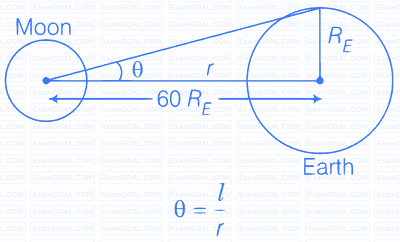Name the device used for measuring the mass of atoms and molecules.
The device used for measuring the mass of atoms and molecules is called a mass spectrometer. Mass spectrometry involves ionizing chemical compounds to generate charged molecules or molecule fragments and measuring their mass-to-charge ratios.
Express unified atomic mass unit in kg.
One atomic mass unit is the $\frac{1}{12}$ of the mass of a 6 12C atom.
Mass of one mole of 612 C12 atom = 12 g
Number of atoms in one mole = Avogadro's number = 6.023 × 1023
A function $f(\theta)$ is defined as $f(\theta) = 1 - \theta + \frac{\theta^2}{2!} - \frac{\theta^3}{3!} + \frac{\theta^4}{4!} + \ldots$
Why is it necessary for $f(\theta)$ to be a dimensionless quantity?
Since $f(\theta)$ is a sum of different powers of $\theta$ and it is a dimensionless quantity. By principle of homogeneity as RHS is dimensionless, hence LHS should also be dimensionless.
Why length, mass and time are chosen as base quantities in mechanics?
Length, mass and time are chosen as base quantities in mechanics because:
(i) Length, mass and time cannot be derived from one another, that is these quantities are independent.
(ii) All other quantities in mechanics can be expressed in terms of length, mass and time.
(a) The earth-moon distance is about 60 earth radius. What will be the diameter of the earth (approximately in degrees) as seen from the moon?
(b) Moon is seen to be of (1/2)° diameter from the earth. What must be the relative size compared to the earth?
(c) From parallax measurement, the sun is found to be at a distance of about 400 times the earth-moon distance. Estimate the ratio of sun-earth diameters.
(a) $\text { Angle subtended at distance } r \text { due to an arc of length } l \text { is }$

Given,
$$ \begin{aligned} l & =R_E ; r=60 R_E \\\\ \theta & =\frac{R_E}{60 R_E}=\frac{1}{60} \mathrm{rad}=\frac{1}{60} \times \frac{180}{\pi} \text { degree } \\\\ & =\frac{3}{\pi} \approx 1^{\circ} \end{aligned} $$
Hence, angle subtended by diameter of the earth $=2 \theta=2^{\circ}$.
(b) Given that moon is seen as $\left(\frac{1}{2}\right)^{\circ}$ diameter and earth is seen as $2^{\circ}$ diameter.
Hence, $$ \frac{\text { Diameter of earth }}{\text { Diameter of moon }}=\frac{(2 / \pi) \mathrm{rad}}{\left(\frac{1}{2 \pi}\right) \mathrm{rad}}=4 $$
(c) From parallax measurement given that sun is at a distance of about 400 times the earth-moon distance, hence, $\frac{r_{\text {sun }}}{r_{\text {moon }}}=400$
(Suppose, here $r$ stands for distance and $D$ for diameter) sun and moon both appear to be of the same angular diameter as seen from the earth.
$\therefore \frac{D_{\text {sun }}}{r_{\text {sun }}}=\frac{D_{\text {moon }}}{r_{\text {moon }}}$
$\therefore \frac{D_{\text {sun }}}{D_{\text {moon }}}=400$
But $\frac{D_{\text {earth }}}{D_{\text {moon }}}=4$
$\therefore \frac{D_{\text {sun }}}{D_{\text {earth }}}=100$